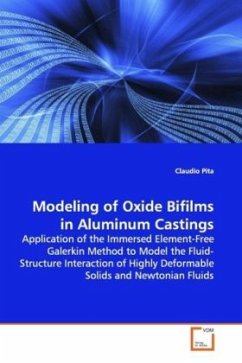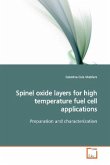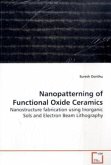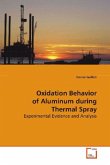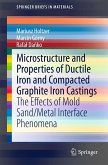Porosity is known to be one of the primary
detrimental factors controlling fatigue life and
total elongation of several cast alloy components.
The two main aims of this work are to examine pore
nucleation and growth effects for predicting gas
microporosity and to study the physics of bifilm
dynamics to gain understanding in the role of bifilms
in producing defects and the mechanisms of defect
creation.
In chapter II, a technique based on the combination
of a set of conservation equations that solves the
transport phenomena during solidification at the
macro-scale and the hydrogen diffusion into the pores
at the micro-scale, was used to quantify the amount
of gas microporosity in A356 alloy castings. The
results were compared with published experimental
data. In the reminder of this work, the Immersed
Element-Free Galerkin method is presented and used to
study the physics of bifilm dynamics. The IEFGM is an
attractive technique for simulating FSI problems
involving highly deformable solids.
The analysis should help shed some light on the
IEFGM, and it should be specially useful to
professionals in engineering interested in
modeling processes involving large deformations.
detrimental factors controlling fatigue life and
total elongation of several cast alloy components.
The two main aims of this work are to examine pore
nucleation and growth effects for predicting gas
microporosity and to study the physics of bifilm
dynamics to gain understanding in the role of bifilms
in producing defects and the mechanisms of defect
creation.
In chapter II, a technique based on the combination
of a set of conservation equations that solves the
transport phenomena during solidification at the
macro-scale and the hydrogen diffusion into the pores
at the micro-scale, was used to quantify the amount
of gas microporosity in A356 alloy castings. The
results were compared with published experimental
data. In the reminder of this work, the Immersed
Element-Free Galerkin method is presented and used to
study the physics of bifilm dynamics. The IEFGM is an
attractive technique for simulating FSI problems
involving highly deformable solids.
The analysis should help shed some light on the
IEFGM, and it should be specially useful to
professionals in engineering interested in
modeling processes involving large deformations.

